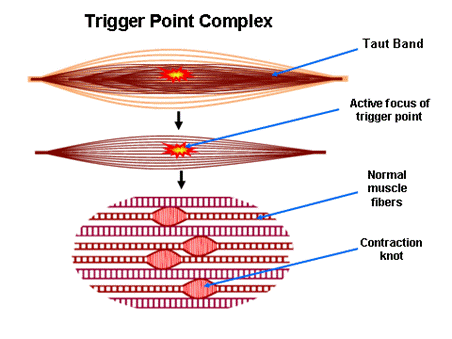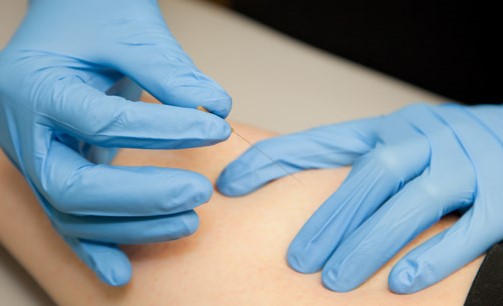Trigger Point Dry Needling at Eastern Foot Care
Myofascial trigger point dry needling is becoming an increasingly popular treatment modality in allied health physical therapy professions. Not to be confused with Eastern Medicine acupuncture therapy (which focuses on defined “Meridian” or “acupuncture points” and balancing “qi energy” within the body), dry needling focusses purely on areas of skeletal muscle that demonstrate hyperirritable fascia around taut bands of muscle fibres aka “knots”.
There are a number of theories outlining the cause of these taut bands of muscle fibres, ranging from overuse from poor biomechanics, congenital factors, poor muscle flexibility amongst others. There are well established observations made regarding local and referred pain patterns associated with myofascial trigger points.

As discussed by Eastern Foot Care Sports Podiatrist Zoe Filippatos, our team regularly see patients presenting with local or referred pain associated with a myofascial trigger point, as well as restricted flexibility through associated muscle groups.
“Patients often report tight calf muscles as a result of increased standing or walking, or a tight iliotibial band (ITB) from a new running program. Gluteal and hip pain is also commonly reported following excessive squatting and lifting, and all of these presentations can be complicated by suboptimal biomechanics” according to Zoe.
Eastern Foot Care Sports Podiatrists are able to implement trigger point dry needling where appropriate as part of an overall management plan. Essentially dry needling (also known as intra-muscular stimulation) involves the use of very fine gauge needles inserted into myofascial trigger points. The term “dry needling” comes from the fact that no solution is injected into the skin, hence the term “dry”.
There are a number of mechanisms by which trigger point dry needling is understood to help with myofascial pain, from relaxing the hyperirritable tissue to instant and drastic improvements in flexibility. Often a local twitch response will occur which involves a small involuntary contraction of the targeted muscle. Dry needling often doesn’t cause pain however some patients report finding the twitching sensation slightly unusual.
At Eastern Foot Care we use myofascial trigger point dry needling as an adjunctive therapy to many conditions that we treat, including:
- Heel pain
- Plantar Fasciitis
- Severs Disease
- Achilles tendinopathy
- Patellofemoral joint pain syndrome (PFJS) or runners knee
- Iliotibial band friction syndrome
- Gluteus medius tendinopathy and trochanteric bursitis
- …amongst many others
If you are interested to discuss trigger point dry needling and whether it may be appropriate as part of your treatment plan contact our Sports Podiatry Centres at:
Eastern Foot Care Ringwood
(03) 9870 1301
Eastern Foot Care Knox (Wantirna South)
(03) 9887 2233
